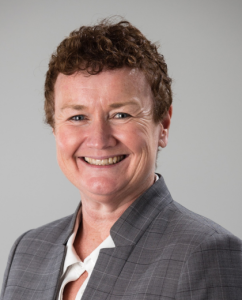Opinion – Reshaping aged care in an age of increasing diversity
Cath Scarth, CEO of AMES Australia
If we know anything about Australia’s population it is that we’re growing, we are getting older and living longer; and we are more culturally and linguistically diverse than ever before.
So, we need to bear these things in mind as we reshape Australia’s aged care system in the wake of the ‘Final report of the Aged Care Taskforce’, delivered late last year.
Nowadays, around one in five Australians over 65 were born overseas and a third of us have at least one parent born overseas.
In 2022, 40,000 Australians from diverse cultural backgrounds were in some form of aged care and this number is expected to grow to 160,000 in the next thirty years, according to the Scanlon Foundation.
The Foundation also says around 28 per cent of people using home care were from multicultural backgrounds, although the Australian Institute of Health and Welfare (AIHW) suggests this proportion may be even higher.
 Since 2020-21, across all mainstream aged care services, about 33 per cent of people were born overseas, of whom 66 per cent were born in non-English-speaking countries.
Since 2020-21, across all mainstream aged care services, about 33 per cent of people were born overseas, of whom 66 per cent were born in non-English-speaking countries.
These figures paint a picture of the rich tapestry of cultural backgrounds among aged people in Australia’s – a cohort which is projected to nearly double by 2025.
This evolving cultural and linguistic landscape of Australia’s aging population is becoming a critical consideration for aged care providers.
The projections highlight the need for aged care services to adapt and increasingly cater to the nuanced needs of CALD communities.
A significant proportion of aged care users, particularly those over 65 who were born overseas, may face language barriers, with fewer than a third speaking English proficiently, according to data from the AIHW.
We also know that people from non-English speaking backgrounds often revert to their first language as they age.
But the challenges faced by individuals from CALD backgrounds extend beyond language barriers.
Limited digital literacy, smaller social networks and historical experiences of marginalisation can contribute to feelings of loneliness and isolation among these populations, exacerbating the complexities of aging.
Indigenous Australians also confront unique challenges stemming from historical trauma, cultural disparities and geographical isolation, which impede their access to and engagement with aged care services.
These issues can affect the ability of older adults to access and engage with essential support and services that can improve their quality of life and contribute to generally better outcomes.
Leaving aside issues around cultural diversity, the prevalence of dementia and cognitive impairment among elderly populations also significantly impacts aged care needs.
Dementia not only affects cognitive function but also requires specialised care and support tailored to individual needs.
From memory loss to difficulties with communication and daily activities, dementia can profoundly affect an individual’s ability to live independently, necessitating comprehensive and person-centred aged care services.
As Australia’s population ages, addressing the unique needs of individuals living with dementia and cognitive impairment becomes increasingly crucial for ensuring quality aged care provision and enhancing the well-being of older adults across diverse communities.
Recently, I heard the story of ‘Ellie’, an elderly migrant women who was beset by dementia. Ellie was reverting to first language, struggling to look after herself and hadn’t left the home she shared with her son for five years.
My organisation was able to match Ellie with a carer with appropriate language skills and set up a care plan. Six weeks later, Ellie was again able to access community services and attend a Christmas party.
Ellie’s case shows that understanding the nuanced demographics and needs of aging populations within service areas is imperative for delivering tailored, relevant and sensitive aged care assessments.
Across Australia, regions exhibit distinct demographic compositions and care requirements, necessitating customised approaches to service provision.
For instance, regions within Victoria’s reveal varying proportions of CALD populations, ranging from higher concentrations some places to significant Indigenous representation in others.
Looking at this data, it’s obvious that Australia’s aged care needs are multifaceted and dynamic, requiring a paradigm shift towards culturally competent and community-centric, client-led care models.
Our experience at AMES Australia working with multicultural communities across the country, shows us that culturally competent communication is the first step in removing some of difficulties and barriers.
Including members of CALD communities in our aged care work force, while also providing cultural competency training and resources to all of the work force, will also help.
Adopting an aged care framework that recognises that individuals flourish when they are connected to family, to co-ethnic groups, and to the broader community, provides a significant opportunity to improve the wellbeing and outcomes of older Australians from non-European-Australian backgrounds.
By embracing diversity as a cornerstone of aged care provision and by fostering inclusive and responsive services, Australia can navigate the complexities of an aging population while honouring the diverse cultural identities and experiences of its older citizens.
AMES Australia is a migrant and refugee settlement agency supporting both aged and disabled people who are new to Australia.












